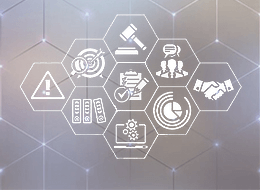
In the rapidly evolving landscape of decentralized technology, Ritual.net emerges as a groundbreaking project aiming to redefine how artificial intelligence (AI) and machine learning (ML) models are accessed, shared, and monetized. By leveraging blockchain technology, Ritual.net seeks to create a decentralized network where AI models can be deployed, executed, and incentivized in a trustless, permissionless environment.
This article explores the vision, architecture, and potential impact of Ritual.net, shedding light on how it could shape the future of decentralized AI.
What is Ritual.net?
Ritual.net is a decentralized AI network designed to facilitate the distribution and execution of AI models in a censorship-resistant, open, and economically sustainable ecosystem. Unlike traditional AI platforms controlled by centralized entities (e.g., OpenAI, Google, or Meta), Ritual.net enables developers, researchers, and users to interact with AI models in a peer-to-peer (P2P) manner, powered by blockchain and cryptographic verification.
Key Objectives:
**Democratize AI Access **– Remove gatekeeping in AI by allowing anyone to contribute, use, or monetize models.
Censorship Resistance – Ensure AI models remain accessible without corporate or governmental restrictions.
Incentivized Participation – Reward model providers, validators, and users through a tokenized economy.
Interoperability – Support cross-chain compatibility, allowing integration with multiple blockchain ecosystems.
How Ritual.net Works
Ritual.net operates as a decentralized compute network where AI models are hosted and executed in a distributed manner. Below is an overview of its core components:
1. Decentralized AI Model Hosting
AI models (e.g., LLMs, diffusion models, classifiers) are stored and served by a network of nodes.
Model providers can upload their AI models and set pricing mechanisms for usage.
2. Proof of Inference (PoI)
A novel consensus mechanism where nodes cryptographically verify that AI inferences (predictions) were executed correctly.
Prevents malicious actors from providing false results.
3. Tokenized Incentives
$RITUAL Token: The native cryptocurrency used for:
Paying for AI model usage.
Rewarding node operators and validators.
Governing the protocol via decentralized governance (DAO).
4. Cross-Chain Compatibility
Ritual.net is designed to work across multiple blockchains (Ethereum, Solana, Cosmos, etc.), ensuring broad accessibility.
Use Cases of Ritual.net
Ritual.net’s decentralized approach unlocks numerous applications:
1. Open AI Development
Developers can integrate AI models into dApps without relying on centralized APIs.
Enables uncensorable AI applications in areas like content generation, data analysis, and automation.
2. AI Model Monetization
Researchers and companies can earn rewards by hosting their models on Ritual.net.
Users pay directly to model providers, creating a fairer revenue model than traditional SaaS platforms.
3. Privacy-Preserving AI
Since Ritual.net does not rely on centralized servers, sensitive data can be processed without exposure to third parties.
4. Decentralized Autonomous Organizations (DAOs)
DAOs can use Ritual.net to deploy AI-driven governance tools, analytics, and decision-making models.
Challenges & Future Outlook
While Ritual.net presents a compelling vision, it faces challenges:
Computational Costs: Running complex AI models on-chain or via decentralized networks can be expensive.
Adoption: Competing with established AI providers requires robust incentives and superior usability.
Regulatory Uncertainty: Decentralized AI may face scrutiny from regulators concerned about misuse.
Despite these hurdles, Ritual.net has the potential to reshape the AI industry by fostering a permissionless, community-driven ecosystem.
Conclusion
Ritual.net represents a bold step toward decentralizing artificial intelligence, offering an alternative to the corporate-controlled AI landscape. By combining blockchain, cryptographic verification, and a tokenized economy, it empowers developers, researchers, and users to participate in an open AI marketplace.**
As the project evolves, it could become a cornerstone of Web3’s AI infrastructure, ensuring that the future of machine intelligence remains accessible, transparent, and decentralized.
For more information, visit https://ritual.net or follow their official channels.






